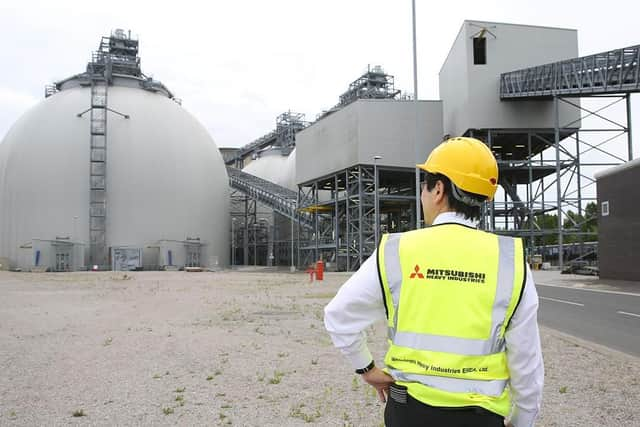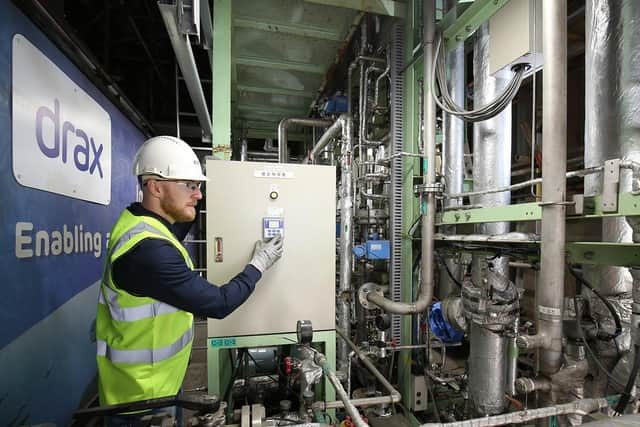Drax carbon capture plan to create 50,000 jobs takes major step following contract with Mitsubishi
The contract will see Mitsubishi provide their carbon capture technology to Drax’s plan to become emissions negative by the end of the decade in what is thought to be the largest deployment of negative emissions in power generation anywhere in the world.
The deal could see Mitsubishi establish a UK supply chain for its technology and represents a major step for a programme which Drax believes will protect 55,000 existing jobs and create a further 50,000 across northern England.
Advertisement
Hide AdAdvertisement
Hide AdDrax Group’s chief executive, Will Gardiner, inset, told The Yorkshire Post he was now very confident that its plan for carbon capture technology would come to fruition.


He said: “This is a major event and a huge step forward in terms of BECCS (bioenergy with carbon capture and storage) being delivered with Drax.
“Mitsubishi is a world leader on this front, with 13 projects globally and many years of experience.
“We reviewed multiple providers and they were head and shoulders above them. The fact that they are looking to configure a supply chain was a big advantage.”
Advertisement
Hide AdAdvertisement
Hide AdDrax will license MHI’s unique carbon capture solvent, KS-21, to capture carbon dioxide at its power station near Selby, North Yorkshire.


While this solvent is currently produced abroad, The Yorkshire Post understands MHI wants to establish a domestic supply for its production within the UK.
Mr Gardiner said that Drax would now look to emulate the success of Britain’s offshore wind industry with its plan for BECCS.
“The UK has done a fabulous job when it comes to offshore wind and is a global leader [in that field].
Advertisement
Hide AdAdvertisement
Hide Ad“We want to use that model for BECCS. But I think a lot of people will be disappointed about how much of its content has been made on shore. That is why we are more focused on supply chain this time around.”
MHI plans to locate its core CCS team at the company’s European headquarters in London and explore additional employment opportunities in the UK in future.
Kenji Terasawa, president and CEO of MHI, added: “We are very proud to have been selected as Drax’s technology partner and we firmly believe that our carbon capture technology will make a significant contribution to the UK and wider global community achieving their net zero targets.
“We look forward to expanding our presence in the UK and developing a centre of excellence for the deployment of carbon capture technology across Europe, the Middle East and Africa region.
Advertisement
Hide AdAdvertisement
Hide Ad“MHI aims to continue reducing greenhouse gases globally by providing reliable and economically feasible carbon capture technology, supported by research and development activity over 30 years.”
The first BECCS unit at Drax could be operational by 2027, supporting thousands of jobs across the North of England as soon as 2024, and capturing and storing at least 8 million tonnes of carbon dioxide a year by 2030.
Drax is the first company to sign a contract to deploy carbon capture technology at scale in the UK.
The project will combine MHI’s technology with offshore geological storage under the North Sea, helping the UK achieve its target to cut carbon emissions by 78 per cent by 2035.